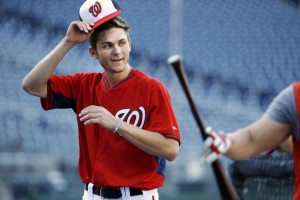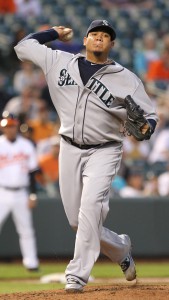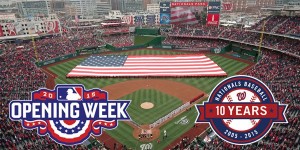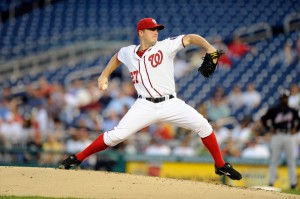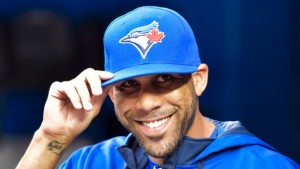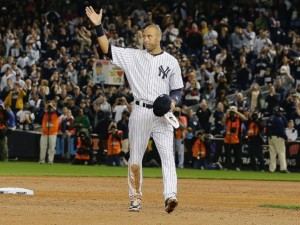We found out last week that Trea Turner qualified for Super-2 status by a scant two service days. Two frigging days. Great for him; instead of getting $600k next year he’ll probably get $5M or more (mlbtraderumors.com estimates $5.3M for his first year). He’s certainly deserving of this money after delivering bWAR seasons of 3.4, 2.6 and then 4.1 in 2018. The first two numbers are even more impressive given that they were done in partial seasons.
But this is a huge issue for the franchise. And yet another critical payroll management error that is now making even more evident that there needs to be some accountability.
To give you an idea of how much this little situation will cost the Nats, lets look at what our last significant Super-2 guy did: Anthony Rendon. Even though he signed to avoid arbitration each time, and even though he was one of the last pre-CBA deals that outlawed 40-man/MLB deals, he’s still a super-2 guy and we can project his salary with and without the extra year.
- 2016: 2.8M
- 2017: 5.8M
- 2018: 12.3M
- 2019: MLBtraderumors estimates $17.6M.
Total outlay: $38.5M
Instead, had he been a normal arb player, he’d have basically gotten the first three years of this scenario plus the 4th year of MLB min. So his salary would have looked like this:
- 2016: $550k
- 2017: 2.8M
- 2018: 5.8M
- 2019: 12.3M
Total outlay: $21.4M
Pretty significant difference. You may quibble with the player and with the estimates … but the fact remains, a 4th arbitration year for a very good player will likely mean a $18M-$20M payroll difference. If you really want to see a team that screwed this up, look at Tim Lincecum‘s salary progression with the Giants. He qualified for Super2 by just a few days and went from a MLB min salary to $9M, with escalators up to $22M by the time he was done.
Anyway; why do I care? It isn’t my money right? Well I care because this little screw up cost the team $5M more than it was expecting just a few weeks ago, in a critical off-season where they need to fill multiple holes and are clearly dead-set against even coming close to the luxury tax cap again. And now they have $5M less to play with. $5M less to try to shoe-horn Bryce Harper into a deal maybe, or $5M less to spread around to catchers, starters, relievers and infielders that they need.
And this situation was ENTIRELY AVOIDABLE. Entirely. The Nats made two significant errors in the handling of Turner’s service time:
- August 2015: The team calls up the 22-yr old to essentially be a bench-bat for a team going nowhere. In case you don’t remember, on the day of his call-up the Nats were 60-61, below .500, 5 games out of first place and with no place to play him. Turner basically gets pinch hit appearances for weeks, finally getting to start a game on Sept 18th, and then starting every day the last week of the season as the Nats were eliminated and busy doing other things (you know, like having our idiot closer choke out our most important player on national TV). To this day, I don’t understand how the manager (Matt Williams) and the GM (Mike Rizzo) were so far apart on this situation. Why call him up if he’s just going to sit? Who was asking for the call-up and who was forcing the call-up? Why not send him back down if it became apparent he wasn’t going to play? They didn’t have a position for him, with two veterans entrenched at 2B and SS at the time (Ian Desmond and Danny Espinosa). The entire move made no sense … and put the team in a significant pickle with Turner to start 2016.
- June 2016: the team calls him up on June 3rd, he starts a game, rides the bench for a game, then gets sent back down. Why?? There was no corresponding D/L trip that I can find for backup infielders; the only move at that time was Ryan Zimmerman going on paternity leave … but he’s a 1B, not a middle infielder. Two days later the team signed veteran MIF Steve Lombardozzi to a contract the same day they sent Turner down. Wtf? You couldn’t have covered for whoever was unavailable out of on-hand options instead of screwing around with the service time of one of your best prospects, one who you knew was in flux thanks to the previous year’s decisions? Who made the decision to call up Turner instead of just batting some replacement level utility infielder 8th for a couple of nights? Was it Dusty Baker who demanded the player to come up … so he could sit him the next night??
Those two moves, more than two years ago, come home to roost now.
Maybe it won’t matter. Maybe the team doesn’t need that extra $5m because they’re going to move someone else. Maybe the team has already decided to move away from Harper and knows they won’t need every penny of payroll. Maybe the team already figures 2018 was their big shot and they frigging blew it and are ready to stop really trying and just rake in the MLB Advanced Media revenue for a while.
Maybe there’s a severe disconnect in this front office, evidenced by the manager selection this year, evidenced by the petulant ridding of certain players, evidenced by the in ability to see early enough they didn’t have the horses and shedding payroll … only STILL not able to get underneath the penalty or 2018 (still amazed by this).
So anyway, can’t wait to hear ownership tell us they just couldn’t afford to keep Harper or to buy a needed replacement when it comes up because they have to stay under the luxury tax. I’m not one to say I told you so … but remember this post if and when it happens.
